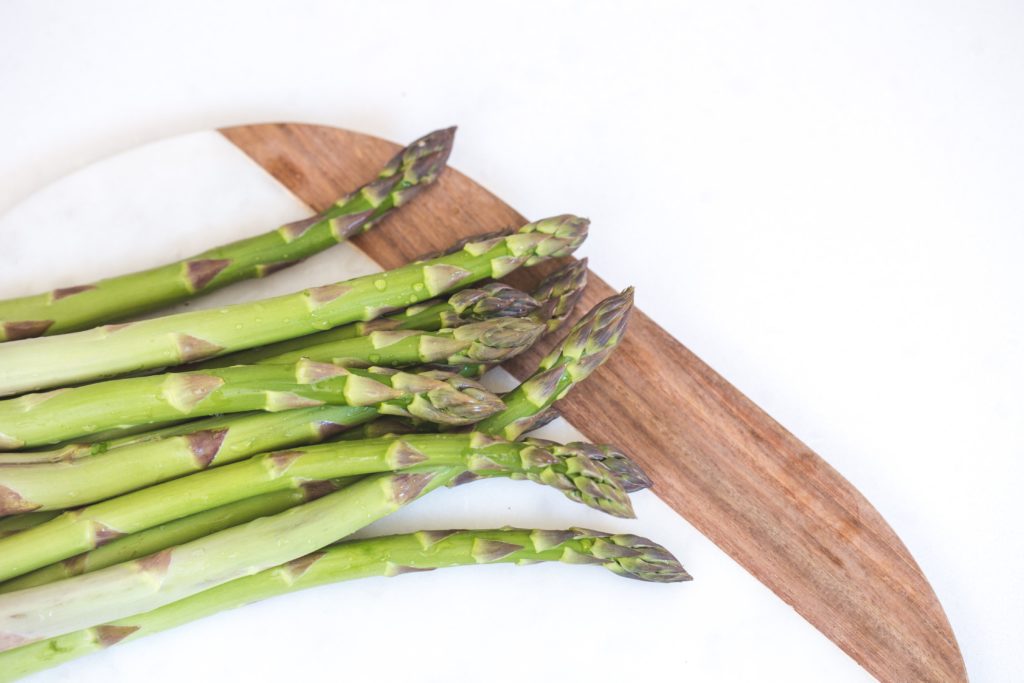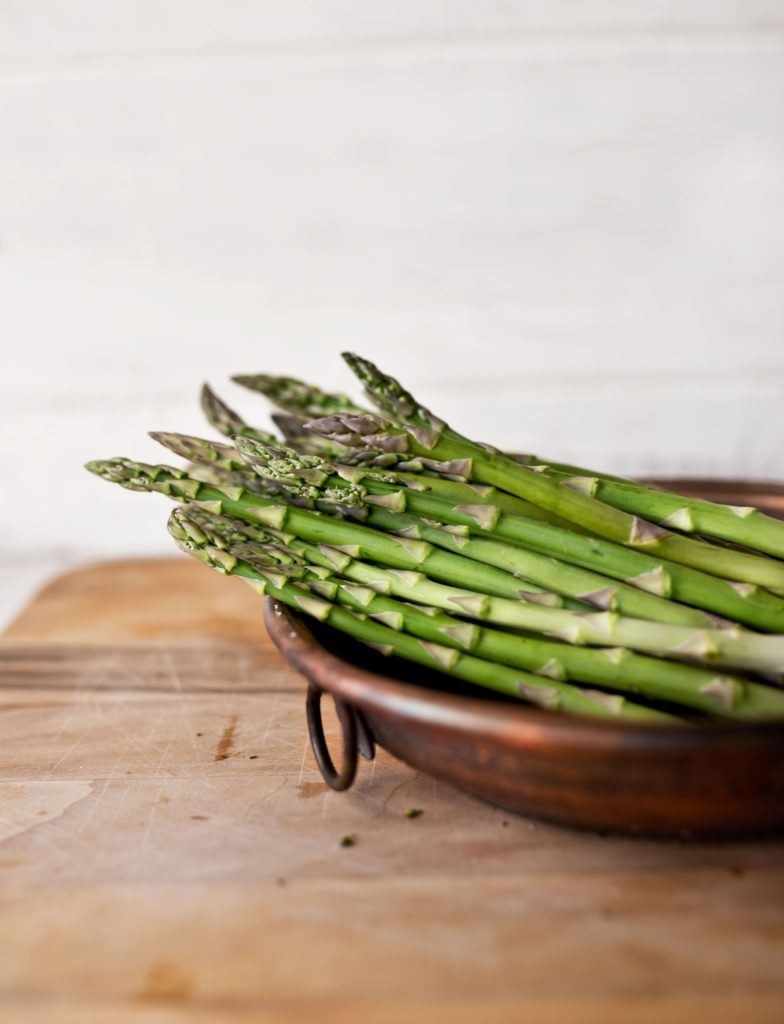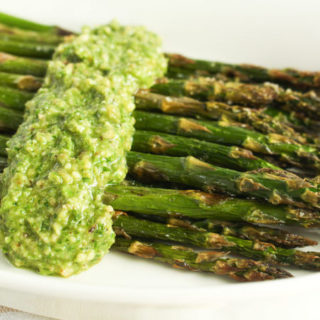Utilize these tips on how to select and store asparagus properly to help it last longer.
Selecting Asparagus
Did you know?
Size isn’t an indicator of quality or flavor; thick asparagus is just more mature than the thin variety. Instead, look for firm, straight, and plump stalks of asparagus vibrant in color. Avoid stems that are very firm, woody, and cracked. This is a sign of aging and drying out.
The tips, also called the buds, of asparagus, are just as important to pay attention to as the stalks. Look for asparagus tips that a tight and firm with a hint of dark green and purple color to them.
Notice that in the produce department or at the farmer’s market, the asparagus bunches are rubber-banded and lined up in a trough of water? If not and just lined up on the shelf, the asparagus has already started drying out resulting in more to trim off and less to eat, when ready to use.
There is nothing worse that taking out asparagus from the vegetable crisper to find either limp or dried out asparagus.
Asparagus will keep for a week or more in the refrigerator if stored properly. Treat asparagus like flowers, needing to be kept upright and moist in water to stay fresh.
The Best Way to Store Asparagus
- Right when you bring home asparagus from the grocery store or farmer’s market, trim about an inch off the ends of the asparagus.
- Stand the asparagus up in a glass jar and pour about an inch or two of water at the bottom, making sure all the ends are sitting in the water.
- Loosely cover the asparagus with a plastic bag and store in the refrigerator for up to a week. If the water looks cloudy, just change it as needed.
Health Benefits of Asparagus
Asparagus, being packed with antioxidants is one of the top-ranked fruits and vegetables for its ability to neutralize cell-damaging free radicals. This may help slow the aging process and reduce inflammation.
The green veggie is packed with good-for-you vitamins and minerals like vitamins A, C, E, K, and B6, as well as folate, iron, copper, calcium, protein, and fiber.












